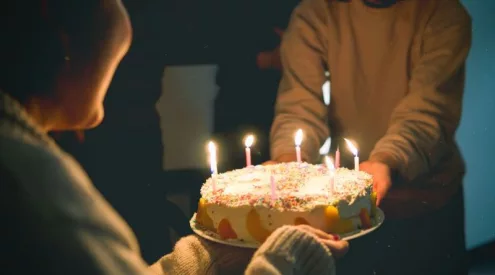“The first thing you need to learn about mushrooms is which ones not to pick!” says Gary Goldman. Hallucinogenic “shroom” jokes aside, there are some pretty mean mushrooms out there that will attack your liver and kidneys, cause muscular spasms and in some cases death. So it’s best to know the good ones from the bad and who better to show us the way than The Mushroom Hunter, who “can just smell a mushroom and know if it’s a Porcini.”
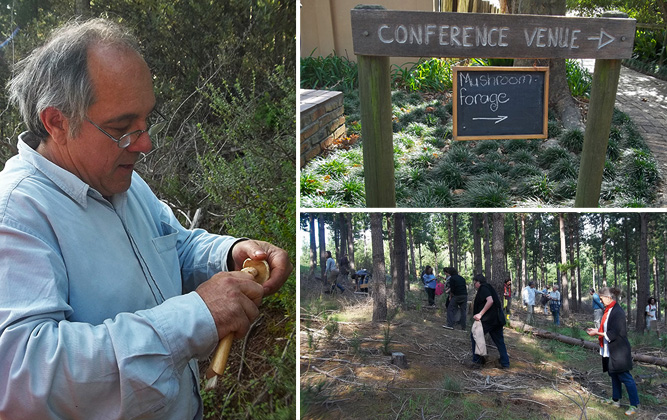
When I arrived at Delheim Wine Estate for a mushroom forage held during their annual Mushroom Week (usually around mid-June), I didn’t realise just how interesting fungi could be! First up was a lesson in mushrooms in the VAT cellar where Gary took us through the various types of mushrooms (good and bad), their medicinal properties and when to find them, along with how to clean, store and cook them. It may have felt a little like school with a slide show and notes, but it was definitely the most interesting lesson I have had in years. Here are few things that I particularly enjoyed finding out:
- The Field mushroom goes through three life stages. When it is small it is known as the Button mushroom (or Denny Mushroom to some) , as it grows it becomes a Porcini mushroom and finally a Black Mushroom.
- A mushroom with pink or brown gills or a sponge is generally edible, just as a mushroom with white gills should generally be avoided if in doubt.
- The Shaggy Ink-Cap mushroom produces edible ink that can be used to paint or draw with. The mushroom is also edible, but do not consume alcohol with it.
- The fan-shaped Artist’s Conk mushroom found growing on trees is often used as a drawing medium for artists. When the surface is rubbed or scratched, it changes from light to dark brown, producing visible lines and shading.
- The Blusher mushroom is poisonous when raw, but delicious and safe to eat when cooked.
- Chicken In The Woods mushrooms taste just like chicken. So much so that Gary’s cats have been known to fight over them!
- The Death Cap mushroom has a very apt name – it’s extremely poisonous and it’s responsible for most mushroom-related deaths.
- The Dye Ball mushroom will dye wool purple.
- Red Stinkhorn mushrooms look like an octopus and smell like rotting meat or sewerage!
- The Fly Agaric mushroom is, according to Gary, “not magic, it’s tragic”. Although I wouldn’t eat it, it’s my favourite mushroom as it’s the type of mushroom you see in fairytales (red with white spots). There are many stories linked to this mushroom, but it’s most popular use is as a natural fly poison. Place a piece of dried Fly Agaric into a saucer of milk and watch as the flies go for it and then drop dead! Unfortunately pets will go for it too, so make sure you keep the saucer of fly-killer out of their reach.
- All bracket fungi have medicinal properties. Some of the more well-known ones include Oyster mushrooms (lowers cholesterol), Shitake mushrooms (lowers cholesterol and stops tumours if caught in time) and Split-Gill mushrooms (anti-bacterial and anti-cancer).
- Mushrooms should be cleaned under a running tap. Don’t soak them in water as they are very absorbent.
- Porcini mushrooms are some of the most sought-after mushrooms in the world and valuable too – they sell for up to 250 pounds a kilogram in the UK! You can dry them in the sun, pop them in a biscuit tin and freeze them for 30 years.

After our mushroom-spotting lesson it was time to go forage for them in Delheim’s forest. Those among us who were better prepared (or super-keen to pick mushrooms) had baskets and packets to store their fungi finds in. We had not gone 200m and Gary pointed out the first mushroom, peeping out from underneath a pile of leaves in the vineyards. Once in the forest poor Gary didn’t have a moment to himself with everyone asking him about what kind of mushroom they had found. More often than not it was an inedible Brown Knightley (“if one more person holds up a Brown Knightley I will hit them with it”), or a LBM (Little Brown Mushroom – also inedible) and we also came across the very pretty (and much photographed) Fly Agaric. The best find of the day were Pine-Ring mushrooms (also known as Red Pine mushrooms) which are delicious when cooked. These mushrooms produce a carrot-coloured milk if you squash them in your hands so are quite easy to identify. Gary never once lost his patience with his eager students and was quite happy to wander over to anyone who had made a find or to point out where a good stash of Pine-Rings could be found.
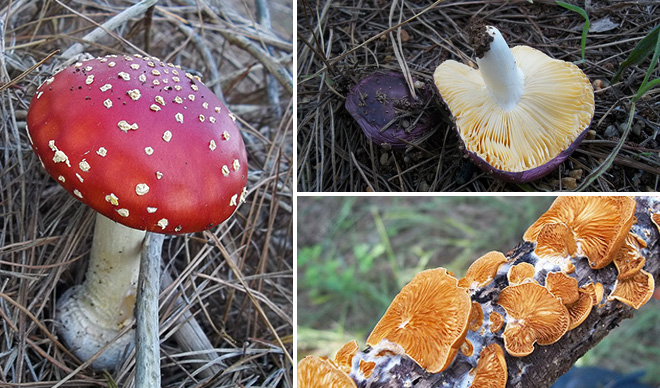
Then it was time for lunch – a mushroom-infused four-course menu in Delheim’s Garden Restaurant, paired with Delheim’s wines. For starters we had the Delheim Mushroom Platter with mushroom soup in a teacup, shimeji & papino salad, spinach and shitake salad and homemade bread with a creamy mushroom pâté. I indulged in a springbok venison and pine-ring mushroom stew as my main course while others tried the boletus mushroom risotto and the exotic mushroom and chicken tagliatelle. As that wasn’t enough, dessert was a decadent mascarpone cheese cake and to round it off, mushroom and apricot biscotti served with coffee. (Don’t worry, some of these recipes will be appearing here soon, so you can try them yourself!)
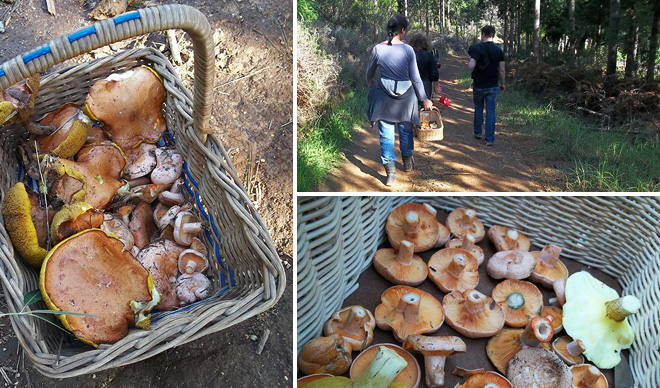
The Delheim Wild Mushroom Forage is now in its fourth year and cost R250 for the day, including the lunch. If you love mushrooms and fancy being able to do a little mushroom foraging around Newlands Forest, then I strongly recommend you go. For someone who had only ever cooked with button or black mushrooms and would’ve run a mile from a Pine-Ring mushroom, I drove home scheming about a porcini-picking outing next year. Gary told me where I could find them in abundance and it’s not far from where I live. But you won’t get me to tell you that little secret, you will have to go his next foraging excursion to find out!
Please note:
This workshop doesn’t make one a mushroom guru. I wouldn’t be able to tell you the difference between a Panther mushroom and a Blusher mushroom (except one’s poisonous and one’s edible), so if any doubt or have any questions, please direct them to Gary. Remember, “there are old mushroom hunters and there are bold mushroom hunters, but never both.” Don’t take any chances!
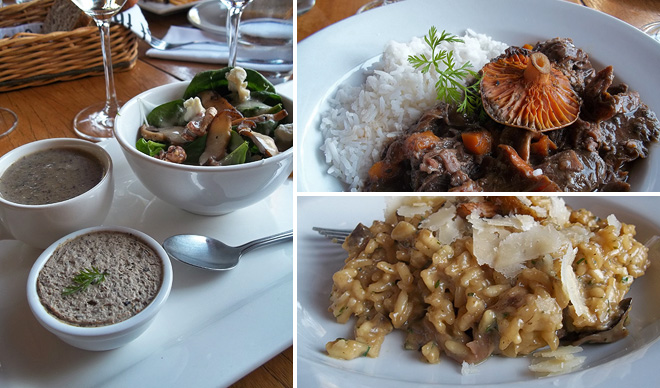
Contact Gary Goldman
You can contact The Mushroom Hunter on 073-936-2378, email [email protected], www.mushroomguru.co.za.
Mushroom recipes from Delheim
Delheim has kindly shared some of their mushroom recipes with us: we’ll be passing them on to you over the next two weeks!
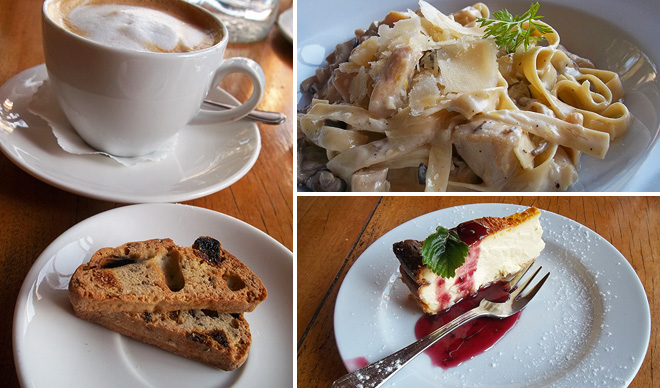
Jazzy Cheese Fondue at Delheim Wine Estate
You may have missed the mushroom extravaganza, but Delheim have Jazzy Cheese Fondues on Sundays from 7 July to 28 August 2013. Expect steaming pots of Swiss fondue, award-winning estate wines and toe-tapping sounds of the Pierre-Henri Wicomb Jazz Trio. R150 per person and booking is essential. Tel 021-888-4607, email [email protected], www.delheim.com.










